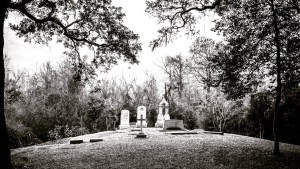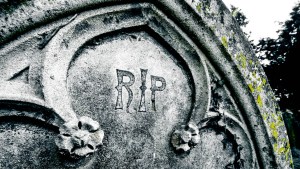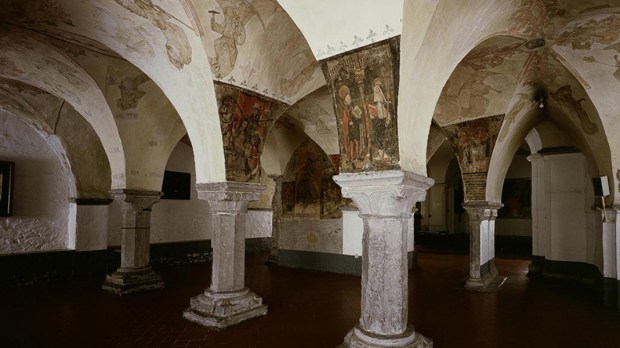When visiting larger Catholic churches, particularly cathedrals or basilicas, there is often an area called a “crypt.” What is it?
The word “crypt” can have two different meanings when used in connection to a church building. The first refers to an area beneath a church building that is reserved for the burial of individuals. This particular use of a crypt is not as common as it once was in the early Church, as described by the Catholic Encyclopedia.
The word originally meant a hidden place, natural or artificial, suitable for the concealment of persons or things. When visits to the burial-places [outside] the walls of Rome fell into disuse there ensued a curious change. The Church, no longer able to go out to honor the martyrs, brought the martyrs within the walls, and instead of building churches above the tombs, dug tombs under the churches in which the precious relics were deposited. This was the origin, first of the confessio of the basilicas, and, at a later period, of the crypt which answered the same purpose in the churches of the early Middle Ages. In this way the Romanesque crypt is the direct descendant of the hypogoeum or excavation of the early Christian catacomb.
Essentially it is an underground cemetery that was gradually embellished over the years. Initially these crypts were quite simple, only consisting of places where the bones of the martyrs were placed. Then as the Church became more influential in the world, these crypts were solidified and marble tombs were put into place to protect the remains of those who died. Today crypts are still in use, but primarily for the burial of bishops underneath a cathedral or members of religious orders underneath their own monastery chapel.
The secondary meaning of the word “crypt” is for a lower chapel, typically located underneath the main body of a church. Sometimes a crypt chapel will have an area for underground burial, but this is not always the case. Often a parish church will construct a “crypt,” but its use is restricted to being a secondary chapel for the celebration of Mass or the location for perpetual Eucharistic adoration.
Crypts can connect us spiritually to those first Christians who worshiped God underground in the catacombs, entrusting to God the remains of their beloved dead. It is a beautiful tradition in the Catholic Church, one that continues to have great significance nearly 2,000 years later.

Read more:
A brief guide to visiting a cemetery

Read more:
Did you know R.I.P. is a Latin prayer?

